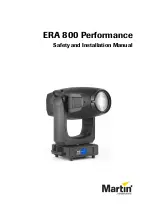
penetration and promote drying, such as autoclave bag, autoclave paper,
or muslin towels.
l
When loading pouches on the tray, put them with paper side up, nylon
side towards the tray (see the figure below)
l
Tubing should be rinsed after cleaning. When placed in the tray, make
sure that both ends of the tubing are open and there are no sharp bends
or twists.
l
Cassettes should be placed on the tray rack in place of the trays. They
should not be touching each other or the Chamber walls. There should be
about 1" (2.5cm) between cassettes or packs for proper steam circulation.
l
If spotting is detected on the instruments it is necessary to determine if the
spot is dirt or rust. The first step would be to use an ordinary eraser to
remove the spot. If there is no pitting under the spot, then the spot is only
dirt. Dirt spots on an instrument may be an indication that the autoclave
needs to be cleaned or that the instruments were not adequately cleaned
or dried prior to sterilization. If removal of the spot reveals pitting, then the
spot is most likely rust. Rust spots on an instrument are not uncommon on
inexpensive instruments. It may also be an indication that the instruments
were rinsed in tap water with a high mineral content. These minerals
when exposed to high temperature and steam will accelerate the
oxidation of the metal. One suggestion would be to final rinse the
instruments in a distilled water bath and pat dry to absorb residual water
and minerals.
l
If the instruments exhibit a discoloration this can be due to the mixing of
Page 29
Содержание AMS10-120-T
Страница 2: ......
Страница 4: ...https www tuttnauerusa com...
Страница 16: ...1 10 Device Specifications 1 10 1 Device Overall Dimensions Page 9...
Страница 55: ...Note For the results of the cycle see description in section 8 5 Page 48...
Страница 66: ...Press to receive the entire printout of the selected cycle history Page 59...
Страница 85: ...Page 78...
Страница 104: ...Cat No MAN205 0502015EN Rev H COPYRIGHT...
















































